| Photo Gallery (48 Images) |
 |
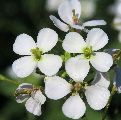 |
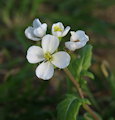 |
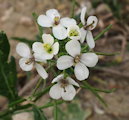 |
IMAGE: DTXER-01 Photo of white flowers situated at the top of the flowering branches. |
IMAGE: DTXER-02 Close-up photo of adult flowers which consists of 4 white petals arranged as the shape of a cross. Very rarely, specimens with pale violet flowers are seen (see image DTXER-05). |
IMAGE: DTXER-03 Photo of a typical flower about 12-20mm across. |
IMAGE: DTXER-04 Photo of several flowers at different maturities, crowding the top of the flowering branch. |
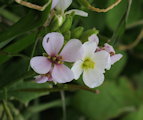 |
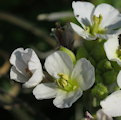 |
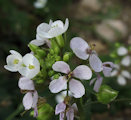 |
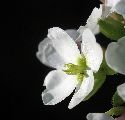 |
IMAGE: DTXER-05 Photo of a young flower (pure white) and mature flower (with lilac/purple tinge) on the same specimen. |
IMAGE: DTXER-06 Close up of flower having 6 stamens, 2 of which are short and lateral, and the remaining 4 are taller and arranged around the pistil. |
IMAGE: DTXER-07 Another photo of the flowers of this species. |
IMAGE: DTXER-08 Lateral view of flower highlighting the pistil surrounded by the stamens having yellow anthers and firm filaments. |
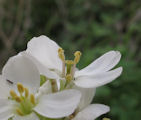 |
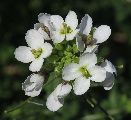 |
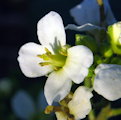 |
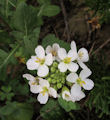 |
IMAGE: DTXER-09 Close-up of a flower showing the arrangement of the 6 stamens around a central pistil at the centre of the flower. Young flowers have the pistil shorter from the stamens, and elongates with maturity. |
IMAGE: DTXER-10 Photo of an inflorescence made up of racemes of 3 - 8 white blossoming flowers. Each flowering branch can produce up to 80 flowers which do not blossom together, but gradually from bottom to top - what is known as an indeterminate inflorescence. |
IMAGE: DTXER-11 Close up photo of a flower (lateral view) showing the 6 stamens and a central pistil with a swollen stigma. The colour of the filaments is green in young flowers and becomes lilac-purple in older flowers. |
IMAGE: DTXER-12 Photo of inflorescence made of a raceme of clustered white flowers at the top of the flowering branch, and progressively gets more lax and spaced down the stem when the flowers develops into fruit. |
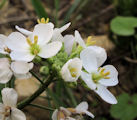 |
 |
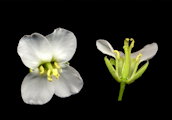 |
 |
IMAGE: DTXER-13 Close up image of few young flowers. |
IMAGE: DTXER-14 Photo of flowering branch with flowers and elongated fruit-pods known as silique (sing. siliqua). |
IMAGE: DTXER-15 Scanned image of 2 flowers (one dissected laterally) against a dark background. |
IMAGE: DTXER-16 Scanned and annotated image of flowers showing in detail their various flowering parts. |
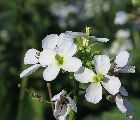 |
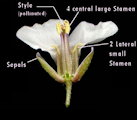 |
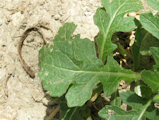 |
 |
IMAGE: DTXER-17 Another photo of the four-petal, white flowers clustered at the top of the flowering branch. |
IMAGE: DTXER-18 Scanned and annotated image of a longitudinally dissected flower (with some petals and sepals removed) showing the arrangement of the 6 stamens around the pistil. |
IMAGE: DTXER-19 Photo of leaves of Diplotaxis erucoides which have 2-4(or up to 6) pairs of lateral lobes and a terminal lobe which is always the largest. |
IMAGE: DTXER-20 Scanned image of an adult leaf. It has deep lobes at the base followed by an apical and terminal roundish large lobe. The margin is shallow dentate (or crenate). |
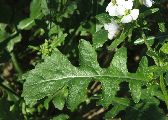 |
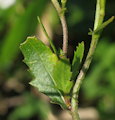 |
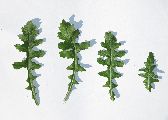 |
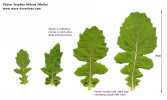 |
IMAGE: DTXER-21 Photo of adult leaf with small lateral lobes and a larger terminal lobe. |
IMAGE: DTXER-22 Photo of leaves at the upper part of the stem (just below the inflorescences). Such leaves are small, sessile and often unlobed (or with shallow lobes). |
IMAGE: DTXER-23 Photo of adult(stem)leaves showing their lobed morphology. |
IMAGE: DTXER-24 Scanned and annotated image of young and adult leaves. They are deeply lobed with the apical lobe being the largest and shortly. |
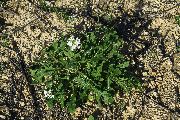 |
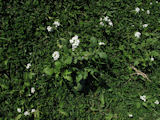 |
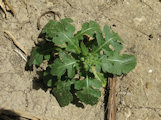 |
 |
IMAGE: DTXER-25 Top view photo of a plant. It is a herbaceous, multi-branched, annual plant with several flowering stems that are in full bloom in November-December. |
IMAGE: DTXER-26 Photo of plant emerging from a carpet of the invasive Oxalis pes-caprae. |
IMAGE: DTXER-27 Photo of young plant in leaves and developing buds. |
IMAGE: DTXER-28 Photo of the upper plant of the plant which consists of numerous, spread-out siliqua and racemes of white flowers. |
 |
 |
 |
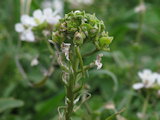 |
IMAGE: DTXER-29 Photo of a flowering branch. |
IMAGE: DTXER-30 Photo of flowering branch taken in December. Inflorescence described as an indeterminate raceme. |
IMAGE: DTXER-31 Photo of a specimen from a field in Qala (Gozo) on 23rd November 2013. |
IMAGE: DTXER-32 Photo with strange morphology (growth distortion) caused by a fungal pathogen (Albuga candidans) which effects several species of the mustard family (Brassicaceae/Cruciferae). |
 |
 |
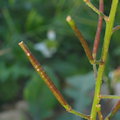 |
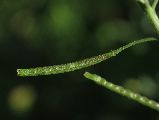 |
IMAGE: DTXER-33 Scanned image of the upper part of the plant including a cauline leaf, several fruit pods and a raceme of white flowers at the apex. |
IMAGE: DTXER-34 Scanned and annotated image of the flowering stem showing racemes of flowers at the upper part followed by plenty of long, spread-out, seed-bearing siliqua. |
IMAGE: DTXER-35 Close up photo of the siliqua which is elongated and often reddish brown in colour. The beak (tip) is very short. |
IMAGE: DTXER-36 Close up photo of another siliqua, an elongated fruiting pod with a central longitudinal partition dividing seeds into two rows. |
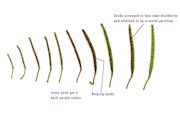 |
 |
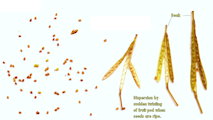 |
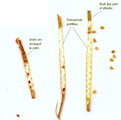 |
IMAGE: DTXER-37 Scanned image of some siliqua at progressive maturity stages. The pods tend to be purple brown especially if they are exposed to the sun. |
IMAGE: DTXER-38 Magnified scanned image of 3 fruit-pods. They have a long pedicel, a short beak and slightly bulging bodies with the seeds inside. |
IMAGE: DTXER-39 Scanned image of ripe siliqua and their seeds. The walls (=valves) break open from the base and twist rapidly to disperse seeds some distance away. |
IMAGE: DTXER-40 Magnified scanned image of 3 open siliqua. They have this characteristic translucent central partition (=replum) to which seeds are attached to. Each fruit-pod holds between 40 - 80 seeds each. |
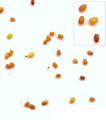 |
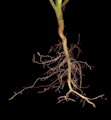 |
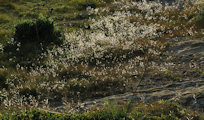 |
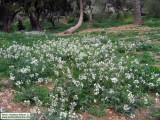 |
IMAGE: DTXER-41 Scanned image of the seeds. They are oval to sub-spherical in shape with a small indentation. They measure about 1.5mm in diameter and are light brown in colour. |
IMAGE: DTXER-42 Scanned image of the subterranean parts - a developed tap-root and numerous outgrowing roots. |
IMAGE: DTXER-43 Photo of plants with empty siliqua. The remaining translucent replum of the siliqua glistens bright against sunlight. |
IMAGE: DTXER-44 Photo of a several plants in their natural habitat, which normally is deep fertile soil found for example in fallow fields, abandoned fields, disturbed soily areas, vine-yards, traffic islands and uncared gardens. |
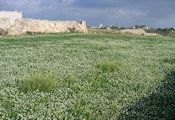 |
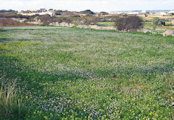 |
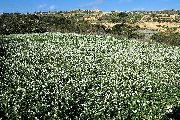 |
|
IMAGE: DTXER-45 Photo of an fallow field covered with white flowers of D. eurocoides (30/Oct/2005). |
IMAGE: DTXER-46 Photo of a field covered with white D. erucoides and yellow Brassica rapa spp. sylvestris. Photo taken from Dingli cliffs on November 2004. It is quite common to find populations of these two species together in November/December. |
IMAGE: DTXER-47 Photo of an fallow field covered with D. erucoides taken in fields at Qala, Gozo (Nov 2013). |
IMAGE: DTXER-48 |

